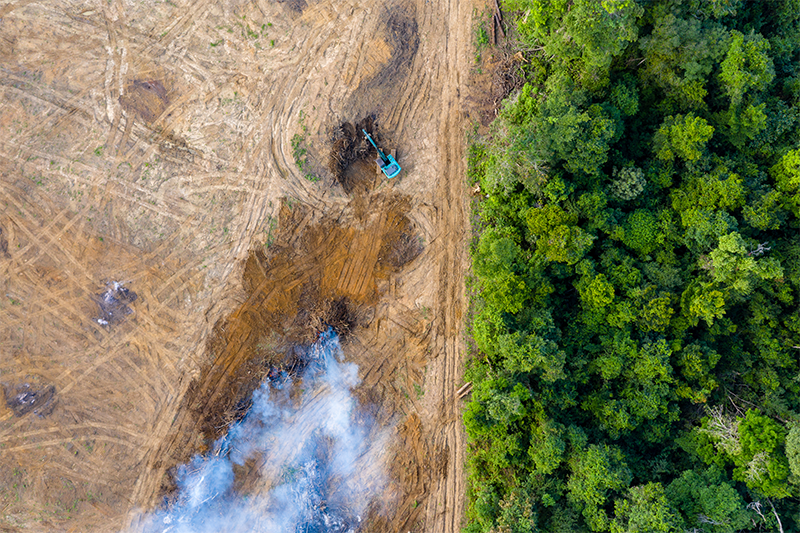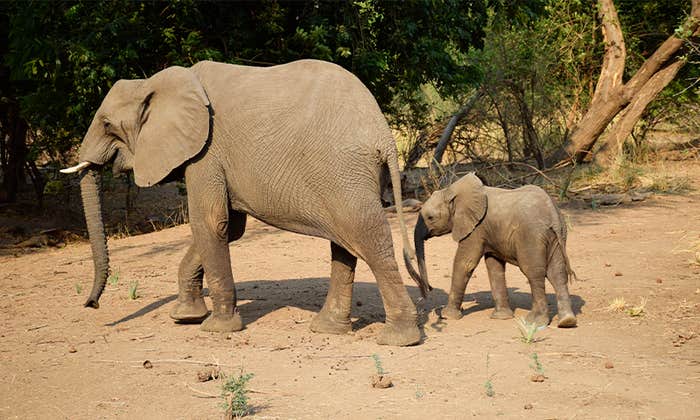What future do we face? What future do we want? What must we do to get there?
These three questions preoccupy us all. We can’t predict the future. However, we can imagine it and even design it; no outcome is predetermined and, as cognitive human beings, we retain the agency to shape the world we want. Perhaps most critically, we can also prepare for the future, by confronting both the risks that we can mitigate and the things that will surprise us. As the most effective conduits for ideas, narratives have the unique power to help us determine what’s going on, what lies ahead, and what needs to be done.
Defined in the simplest possible terms, a narrative is a story about something. Stories are essential to us because as human beings and social animals, we are storytelling creatures. In his 1938 novel Nausea, Jean-Paul Sartre wrote, “A man is always a teller of tales, he lives surrounded by his stories and the stories of others, he sees everything that happens to him through them; and he tries to live his life as if he were recounting it.” Robert Shiller, the “father” of narrative economics, goes one step further, linking narratives to the decisions we make: “The human brain has always been highly tuned towards narratives, whether factual or not, to justify ongoing actions.”

The rich scholarly literature about narratives makes it clear that we think, act, and communicate in terms of narratives, and each interpretation, understanding, or model of how the world operates begins with a story. Narratives provide the context in which the facts we observe can be interpreted, understood, and acted upon. In that sense, they equate to much more than the stories we tell, write, or illustrate figuratively; they end up being the truths, or the ideas we accept as truths, that underpin the perceptions that shape our “realities” and in the process form our cultures and societies. Through narratives, we explain how we see things, how these things work, how we make decisions and justify them, how we understand our place in the world and how we try to persuade others to embrace our beliefs and values. Narratives shape our perceptions, which in turn form our realities and end up influencing our choices and actions. They are how we find meaning in life.
Our narratives have carved the paths of history, some down the darkest roads. But our narratives also bring out the best in us. In his book, The Better Angels of Our Nature, Harvard professor of psychology Steven Pinker makes the vibrant plea that the main line of history is one of improvement and that today’s world is richer, healthier, and safer than it’s ever been. This is correct: On most metrics, if we had to choose throughout history the best time to be alive, it would indeed have to be today. And if we had to choose one quality that powers the better angels of our nature? Imagination.
Imagination is a glorious attribute. When its infinite possibilities are harnessed, it corresponds to a form of “superpower” from which every human being can benefit, individually or collectively. It’s easy to understand why: Every resolution of a problem begins with a bit of imagination. Conversely, many problems occur because of the failure to imagine that they could.
Narratives shape our perceptions, which form our realities and influence our choices.
The expression “failure of imagination” captures this by describing the expectation that future opportunities and risks will resemble those of the past. Novelist Graham Greene used it in The Power and the Glory, but the 9/11 Commission made it popular by invoking it as the main reason why intelligence agencies had failed to anticipate the “unimaginable” events of that day.
Ever since, the expression has been associated with situations in which strategic thinking and risk management are stuck in unimaginative and reactive thinking. Considering today’s wide and interdependent array of risks, we can’t afford to be unimaginative, even though, as the astrobiologist Caleb Scharf points out, we risk getting imprisoned in a dangerous cognitive lockdown because of the magnitude of the task. “Indeed, we humans do seem to struggle in general when too many new things are thrown at us at once. Especially when those things are outside of our normal purview. Like, well, weird viruses or new climate patterns,” Scharf writes. “In the face of such things, we can simply go into a state of cognitive lockdown, flipping from one small piece of the problem to another and not quite building a cohesive whole.”
Imagination is precisely what is required to escape a state of “cognitive lockdown” and to build a “cohesive whole.” It gives us the capacity to dream up innovative solutions to successfully address the multitude of risks that confront us. For decades now, we’ve been destabilizing the world, having failed to imagine the consequences of our actions on our societies and our biosphere, and the way in which they are connected. Now, following this failure and the stark realization of what it has entailed, we need to do just the opposite: rely on the power of imagination to get us out of the holes we’ve dug ourselves into. It is incumbent upon us to imagine the contours of a more equitable and sustainable world. Imagination being boundless, the variety of social, economic, and political solutions is infinite.
With respect to the assertion that there are things we don’t imagine to be socially or politically possible, a recent book shows that nothing is preordained. We are in fact only bound by the power of our own imaginations. In The Dawn of Everything, David Graeber and David Wengrow (an anthropologist and an archaeologist) prove this by showing that every imaginable form of social and economic organization has existed from the very beginning of humankind. Over the past 300,000 years, we’ve pursued knowledge, experimentation, happiness, development, freedom, and other human endeavors in myriad different ways. During these times that preceded our modern world, none of the arrangements that we devised to live together exhibited a single point of origin or an invariant pattern. Early societies were peaceful and violent, authoritarian and democratic, patriarchal and matriarchal, slaveholding and abolitionist, some moving between different types of organizations all the time, others not. Antique industrial cities were flourishing at the heart of empires while others existed in the absence of a sovereign entity.
The point is this: Prior to our “modernity” that culminated with the idea of the Enlightenment, there was an incredible variety of social possibilities that most modern people didn’t imagine were possible. Rousseau’s idealism about the “state of nature” in a pre-civilization world or Hobbes’ conviction that life before the state existed was “nasty, brutish and short” look more like a hypothesis than the scientific canon they often incarnate. If ancient societies did not obey any specific organizational trajectory or evolutionary model, why should it be different in today’s world? What prevents us from imagining different pathways and new forms? What is it that constrains our ability to imagine better ways of dealing with our problems and why can’t we organize ourselves differently? Are we not capable of creating entirely new narratives?
The answer is: Yes, we are! The definition of imagination as “the ability to confront and deal with a problem” involves creativity and an openness to new ways of thinking, plus of course large amounts of disciplined analysis and the prospect of a business or policy application. Otherwise, to paraphrase the Brazilian economist Carlos Braga’s favorite expression, “vision or imagination without implementation is just hallucination.”
When its infinite possibilities are harnessed, imagination corresponds to a superpower.
Today, all sorts of people are engaged in elaborating novel and imaginative ideas, products, and strategies. They do so by developing new ventures, start-ups, economic policies, or mammoth projects and, in so doing, create and shape the future. Their original ideas translate into narratives that produce models which in turn influence behavior and help construct the future. Ultimately, they become instruments of policy and project market power.
In the environmental sector, the stakes for our future are the highest. Imaginative nature-based solutions are leading to a bloom of start-ups. It doesn’t take much imagination to realize that nature gives freely. For centuries, not only have we taken this generosity for granted, but we’ve also exploited it to such an extent that we are now on the edge of a precipice.
Of course, nature is not “free”; it is priceless, and a degree of imagination is needed to grasp what this means in terms of policy. For economists and policymakers, valuing nature and assessing its contribution to our economies and societies is a recent endeavor because, for centuries, we’ve been overlooking the fundamental role nature plays in our lives and underestimating the risks that environmental degradation poses to human welfare and economic growth. Without taking care of the complex ecosystems that ensure that the temperatures remain tolerable, the air breathable and the water drinkable, we simply cannot function as societies. It follows that nature represents an indispensable input to economic activity. It is an asset. We need to treat it as such and in the process reconsider our measures of economic prosperity.
Recent economic studies conclude that more than half of the world’s GDP depends on nature. It renders services that are obvious (like fish stocks and bee pollination), and others that are much more difficult to comprehend (like the work of complex ecosystems within the soil that recycle nutrients, purify water, and absorb atmospheric carbon). These are unfamiliar topics for economists and require a lot of imagination and disciplined analysis on their part to properly account for nature’s contributions to economic growth. As stated recently in the Dasgupta Review, “humanity has prospered immensely in recent decades, the ways in which we have achieved such prosperity means that it has come at a devastating cost to nature. Estimates of our total impact on nature suggest that we would require 1.6 Earths to maintain the world’s current living standards.”
The idea is far-fetched, but it’s already been picked by hard-nosed investment bankers.
Global solutions are going to come from undiscovered shores, and already we see them on the horizon. The Network for Greening the Financial System (NGFS) is a group of 91 central banks and supervisors committed to mobilizing mainstream finance to support the transition toward a sustainable economy. It is investigating many bold financial innovations that could (and most likely will) one day revolutionize the way in which climate-related risks are accounted for in central banking and banking supervision. In short, alongside governments (which have a much broader and more effective range of tools and policies available to prevent and mitigate climate-related risks), central banks will adapt their monetary policy operational frameworks to reflect climate-related risks. This will involve the mitigation of balance sheet risks that stem from climate change and environmental degradation, but also the active support of the transition to a non-carbon, green economy.
Imagining what form this might take and devising policy tools and instruments to get there is the task of the NGFS, and largely depends on how climate risks will affect the economy and financial system through a range of different transmission channels. The menu of options available is extensive and encompasses changes in all three most important policy fields of a central bank: credit operations, collateral policies, and asset purchases. Some of the options represent a radical departure from standard central bank operational policies. They are, in short, the product of central bankers’ imagination.
Some ideas go into uncharted territory, well beyond the scope of what the NGFS is devising in terms of possible policies. Creating “carbon quantitative easing” policies is one of them. It’s a novel, untested, and somewhat outlier narrative that already sounds familiar because it plays a key role in Kim Stanley Robinson’s novel The Ministry for the Future. In the novel, as the climate crisis gets dramatically worse, the world’s top central bankers end up cooperating by collectively abandoning caution to the wind and deciding to create a global “carbon coin” to fund decarbonization. Robinson’s inspiration is grounded on some academic papers published less than five years ago, and lately on the work of the NGFS, that doesn’t yet venture into such wild territory. But asserting novelists’ “poetic license,” Robinson’s imagination runs wild:
[The NGFS] suggested that possibly nations, companies and individuals who draw carbon from the atmosphere could be paid for it directly. Possibly petrostates could be compensated for the fossil fuels they keep in the ground. Possibly oil companies could be paid to suck carbon from the air and then pump it back into the ground; they could also be paid to pump water from under the great glaciers of Antarctica and Greenland, which are currently sliding into the sea on newly melted subterranean water slides. Of course, legislatures and citizens will need to urge their central banks, and ultimately to instruct or order them, to do these things. But the good news is that with these new strategies in hand, even in our current political economy, awkwardly suited at best to the task at hand, we might be able to pay ourselves to do the necessary things, and thus dodge the coming mass- extinction event.
This idea is far-fetched, but it’s already been picked up by some hard-nosed investment bankers. Besides, surely the very purpose of imagination is to venture into unknown territories! ![]()
Klaus Schwab is the founder and executive chairman of the World Economic Forum. His latest books are The Fourth Industrial Revolution, a worldwide bestseller translated into 30 languages, and Shaping the Future of the Fourth Industrial Revolution.
Thierry Malleret is the managing partner of the Monthly Barometer, a succinct predictive analysis provided to private investors, global CEOs, and opinion and decision-makers. He has written several business and academic books and has published four novels.
Adapted from The Great Narrative for a Better Future, by Klaus Schwab and Thierry Malleret. © 2022 World Economic Forum.
Lead photo: PHOTOCREO Michal Bednarek / Shutterstock


























